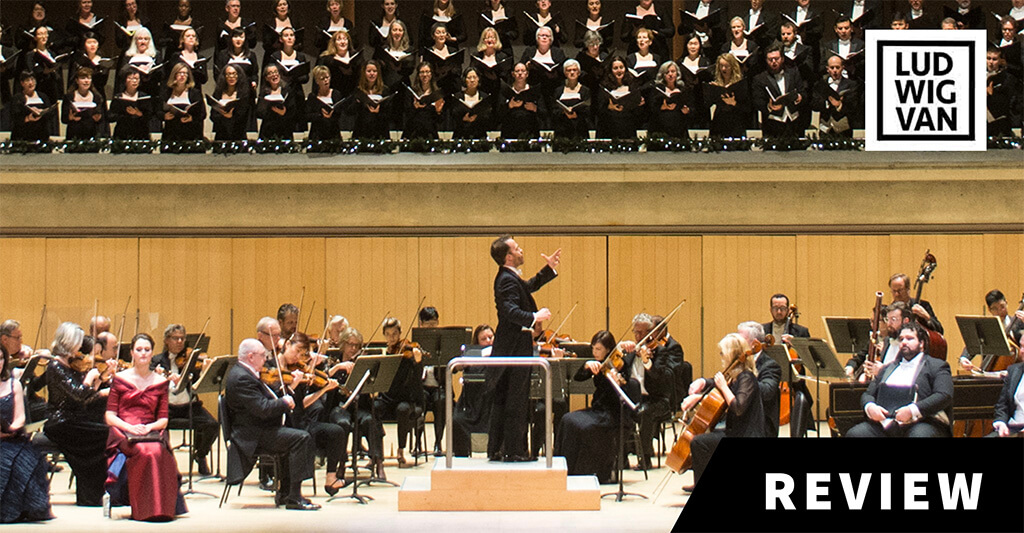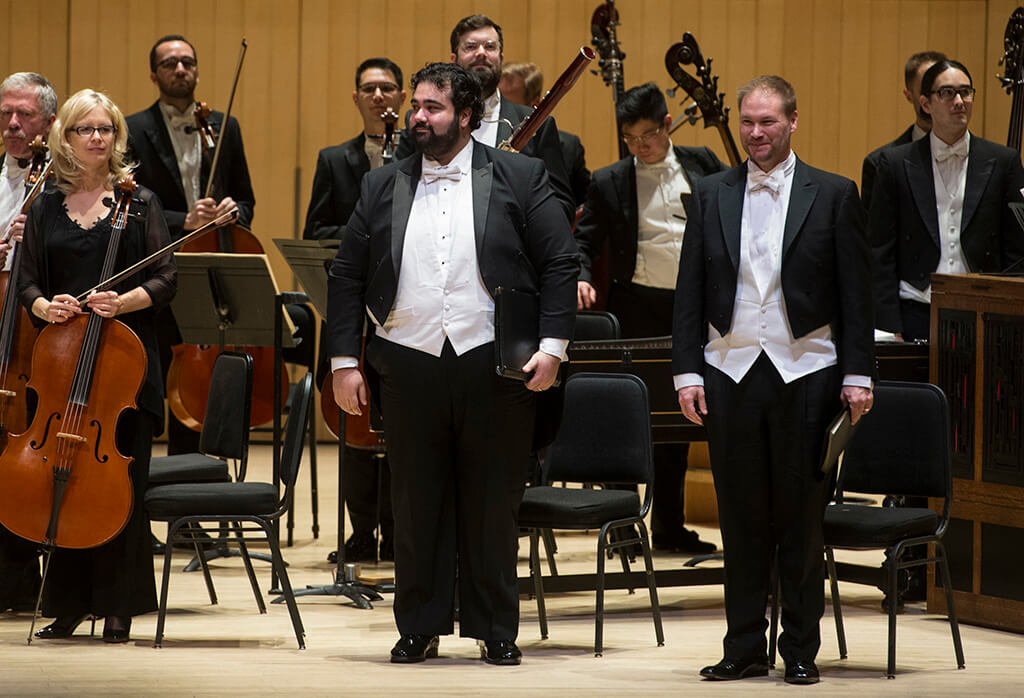
Handel’s Messiah: The Toronto Symphony Orchestra and The Toronto Mendelssohn Choir. Johannes Debus (guest conductor/TSO); David Fallis (Interim Artistic Director/TMC); Allyson McHardy, Claire De Sévigné, Andrew Haji, Tyler Duncan (soloists) at Roy Thomson Hall. December 17-23, 2018. www.tso.ca.
The Toronto Symphony Orchestra presents Handel’s greatest hit every December, generally with a new conductor. Our Messiah maestro this year is both familiar and surprising: Johannes Debus. On Monday, the music director of the Canadian Opera Company oversaw a performance in Roy Thomson Hall that was agreeable in particulars but lacking something in drama.
The stars of the show, numbering about 110, were in the loft. Clearly, the Toronto Mendelssohn Choir has not lost interest in this annual assignment. “For unto us a Child is born” was exuberant and the stresses of “Let us break their bonds asunder” were spot-on. Sections were perhaps not of exactly equal strength — we all know which letter comes first in SATB — but counterpoint was vigorous and the tone was lucid at all dynamic levels. This great institution seems to be thriving under the interim supervision of David Fallis.
Of course, Debus was in charge. Batonless and therefore busy on the podium, he made his wishes known, mostly at moderate tempos. There was a crisp rendering of “Surely” and a fluid treatment of the ensuing fugue.
It was hardly remarkable that the strings (about 30) of the TSO made a sheer, low-vibrato sound. Almost two decades into the well-informed 21st century, they would have to be drilled in retrograde style to do anything else. Everyone today is “historically informed.” Perhaps the continuo was a little heavy. All the same, I think some baroque jobs are best entrusted to modern fiddles. The prestissimo “Refiner’s fire” section of “Who may abide” was dazzling.

Soloists, all Canadians, were at the front of the Roy Thomson Hall stage, where Debus could not see them. Soprano Claire de Sévigné applied high-flying filigree to the da capo of “Rejoice greatly” and mezzo-soprano Allyson McHardy summoned a focused and dignified tone in “He was despised.” Andrew Haji gave a welcome push to his pleasant Italianate tenor in “Thou shalt break them.”
Still, the only member of the quartet who got significantly past the parterre was baritone Tyler Duncan in “Why do the nations.” There were some unusual ornaments in “The trumpet shall sound,” but this famous number was most notable for the obbligato of the title instrument, rendered brilliantly by Steven Woomert. Both trumpets were in the organ loft for the “Glory to God” chorus, as they were last year in the exhilarating performance led by Matthew Halls.

If this Messiah was less stirring, it was good enough for the crowd. All stood for “Hallelujah,” including the soloists. Not that the audience was especially large, even with students of the Lifelong Leadership Institute and their parents present as guests. Maybe six performances are just too many.
As the program annotator pointed out, there is no definitive Messiah, Handel having tinkered with the oratorio many times. One that is often heard is what I shall call the Economy Edition. With cuts to Part 2 and Part 3, this version accomplishes the vital imperative of getting the evening over within about two hours and a quarter, intermission included.
It would be nice next year to hear the duet “O death, where is thy sting?” and the long version of the Pifa, even if this means trimming something else. But what? I suppose we had better keep “Hallelujah.”
- SCRUTINY | Moussa Concerto Sounds Strong In Toronto Symphony Orchestra Premiere, Paired With Playful Don Quixote - April 4, 2024
- SCRUTINY | Esprit Orchestra At Koerner Hall: Ligeti 2, Richter No Score - April 1, 2024
- SCRUTINY | Sibelius & New Cello Concerto By Detlev Glanert Offers A Mixed Bag From The TSO - March 28, 2024



